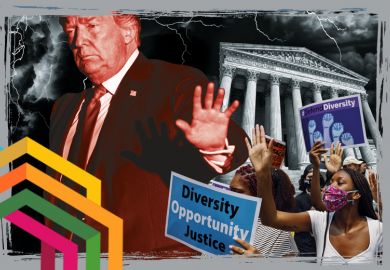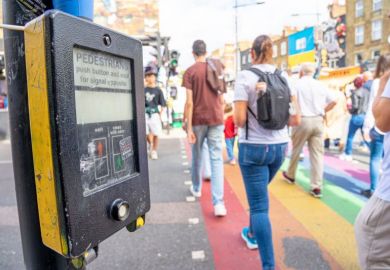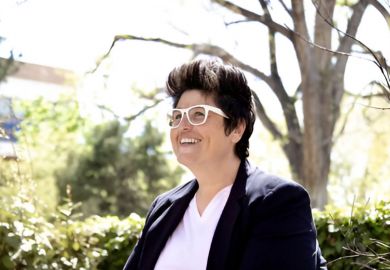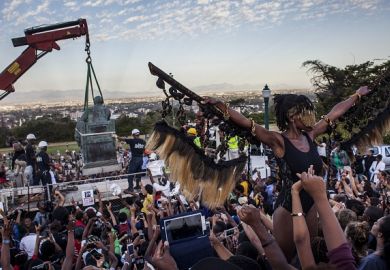At the University of Illinois at Urbana-Champaign, music education major Brandon Young-Eleazar spoke up at university-run listening sessions after noticing that the international students often seemed to be sitting apart from their US-born classmates. His intervention helped prompt the university to start a tradition of all-student social gatherings known as First Fridays.
Meanwhile, at Colby College, a liberal arts college in Maine, history major Malia Sung is part of a programme that organises trips into town for students from the relatively diverse campus to get to know residents of the almost entirely white community of Waterville.
Such initiatives, and thousands more like them on campuses across the US, are generally understood to sit under the rubric of DEI: diversity, equity and inclusion. They come in all shapes and sizes, but, in essence, amount to efforts by institutions to help their students and staff overcome a long and ongoing history of pervasive racism in the US. As Anthony Abraham Jack, an associate professor of higher education leadership at Boston University, puts it, they reflect a recognition that even well-meaning institutions can perpetuate the problem if they aren’t actively working to identify and combat it.
Jack is renowned for writing about his own undergraduate experience: he was granted admission to a top-ranked US college but, even with student aid, was left struggling to meet basic living costs. He now works to help other colleges and universities understand what is happening to their own students and faculty. Left unexamined, he says, “university policies, almost invisibly, disadvantage the most disenfranchised students”.
DEI work is what that examination and correction looks like in practice. Hundreds, likely thousands, of US faculty and staff undertake it, either as their primary job or as one of their chief roles. But now such efforts are under sustained and coordinated nationwide assault, chiefly from conservatives waging a wider culture war against “wokeism” in public life.
While critics suspect that conservatives are motivated by a sense that their friends and families benefited from things the way they were, their public-facing anti-DEI argument is that racial bias has already been effectively outlawed and eliminated, so ongoing work to redress it amounts, in itself, to unfair and unwise discrimination – potentially rejecting the most qualified candidates.
According to Dan Lennington, lawyer with the Wisconsin Institute for Law and Liberty – a coalition that conducts a range of legal battles on behalf of conservative causes – DEI is problematic because “our entire society is rife with disparities” on numerous parameters, including income, geography and even birth order, “and unless you control for the non-discriminatory factors, then you can’t prove that something was caused by discrimination”. That lack of detailed analysis is “the most dangerous thing”, according to Lennington, a former state assistant deputy attorney general and state deputy solicitor general, “because you can find all sorts of disparities in America and say this disproportionately impacts blacks, but unless you’re willing to do the work and ask why it disproportionately impacts blacks, you end up creating policies that victimise Asians, that victimise whites, and victimise Hispanics”.
Consequently, at Lennington’s institute, “We don’t believe in equity,” he says. “Equity is reverse discrimination.”
That idea has erupted in the past two years, largely among state legislatures, which have the most direct control over public higher education. Lawmakers in nearly half of US states have pushed for legislation that would restrict or ban DEI-type activities on their public campuses. Those in at least nine states – led by Texas and Florida, two of the three biggest by population – have already succeeded.
Institutions in many other places are anticipating the threat and pre-emptively walking back practices with DEI implications. In a typical example, the Republican governor of Virginia, Glenn Youngkin, demanded in March that two public institutions – George Mason University and Virginia Commonwealth University – give his education secretary the details of compulsory new diversity-related courses they were planning amid concerns that they were “a thinly veiled attempt to incorporate the progressive left’s groupthink on Virginia’s students”. In May, meanwhile, Wisconsin’s Republican lawmakers began a statewide audit of all DEI-related work in a move that one senior local GOP politician described as “just the first step in what will be our continuing efforts to eliminate these cancerous DEI practices”.
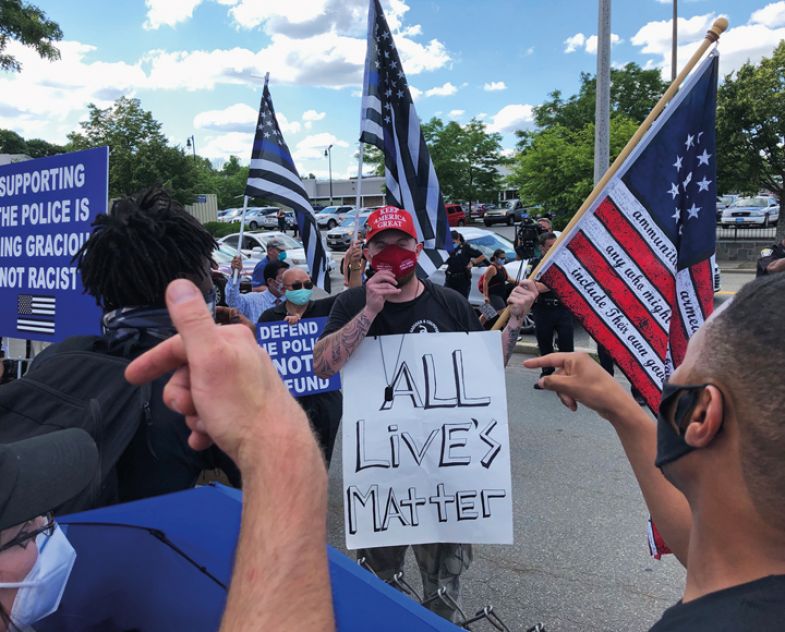
There are also setbacks on the federal level, most notably the US Supreme Court ruling a year ago forbidding race-based considerations in college admissions decisions. When California took that same step in 1998, due to a voter referendum, black and Hispanic enrolments at the top two University of California campuses, Berkeley and Los Angeles, quickly fell by 40 per cent, and haven’t recovered since.
California’s experience frightens diversity advocates, who see DEI efforts around the country as largely meeting their big-picture objectives. One of the clearest indicators of that success is that more than 26 per cent of the nation’s black adults aged 25 and over had a bachelor’s degree in 2022, up from only 14 per cent in 2000. But DEI advocates fear that that progress could now go into reverse. For instance, while the Supreme Court didn’t explicitly require it, government and university officials in some states have pre-emptively ended scholarships with race-based considerations.
The rash of anti-DEI laws and policies emerging around the country since early last year generally fall into two broad categories. One is to order colleges and universities to remove or fire the professionals who help low-income and minority students and faculty succeed. The other is to forbid curriculum and research agendas containing any references to the nation’s historical and ongoing practices of race-based discrimination.
The effects are quickly becoming very real. Multiple institutions have eliminated faculty and staff with DEI roles, sometimes by the dozens. The University of Texas at Austin is estimated by its faculty union to have fired about 60 people from DEI-related jobs, for instance. Other faculty are leaving for friendlier states, while students – typically minorities who need guidance and encouragement given their families’ lack of higher education experience – are dropping out.
“I can tell you that we’re seeing students leaving higher ed institutions that are getting rid of the [DEI] language because they no longer feel comfortable,” says Michael Gavin, president of Delta College in Michigan and author of a book exploring white nationalism in US higher education. And that kind of outcome seems a clear intent of DEI opponents, says Boston University’s Jack. The whole emphasis of the pushback is to restore traditional understandings of “who belongs in the academy and who doesn’t”, he believes.
Some institutions have tried to keep their diversity promotion efforts and just rename them as something less controversial. “Sadly, that’s the game that presidents and deans are having to play,” Jack says.
It is a tricky tactic but one with some historical justification. After all, efforts to help students navigate their pathway to graduation have a long and popular history that predates DEI terminology. In essence, it is a form of student affairs work that naturally devotes greater attention to the students with the greater needs.
Leading practitioners include Timothy Renick, professor of religious studies and vice-provost for enrolment management and student success at Georgia State University. Renick has made Georgia State a pioneer in using advanced computer technologies to track students on an individualised basis and quickly direct resources to them when necessary. For example, staff are automatically alerted when a student is struggling in a key class and are required to immediately arrange targeted tutoring.
Georgia State also employs extensive pre-emptive strategies, such as strategic texting during the summer to ensure that students are up to date on essential tasks, including financial aid filings and course registration. The result is a host of impressive numbers for the 50,000-student public campus in downtown Atlanta, such as four-year graduation rates jumping by 70 per cent since 2010.
Importantly, Georgia State’s approach has also had a profound effect on diversity: the institution’s undergraduate enrolment has shifted from 75 per cent white to 80 per cent non-white over the past 20 years. Renick now heads Georgia State’s National Institute for Student Success, which has been helping more than 70 other US institutions adopt similar models.
OiYan Poon is among those impressed. She spent about 25 years helping first-generation low-income minority students at various US universities long before such efforts were labelled DEI. For instance, she was hired by the University of California, Davis in 2002 to help address equity gaps, largely in response to student demands for greater help for those facing language barriers, she says.
Renick and Georgia State are following in that tradition, says Poon, who is now co-director of the College Admissions Futures Co-Laborative, a network of scholars researching ways college admissions procedures can be designed to advance equity. “What Tim Renick is doing is deeply DEI,” she says – adding that minimising dropout rates is saving Georgia State “a ton of money”.
And in a southern US state with a history of conservative-led government and hard racial division, politicians not only tolerate Renick’s work but actively encourage it. The starkest example is Sonny Perdue, a former Georgia governor and Trump administration cabinet member, who now serves as chancellor of the University System of Georgia and recently enrolled his 26-campus system in Renick’s institute.
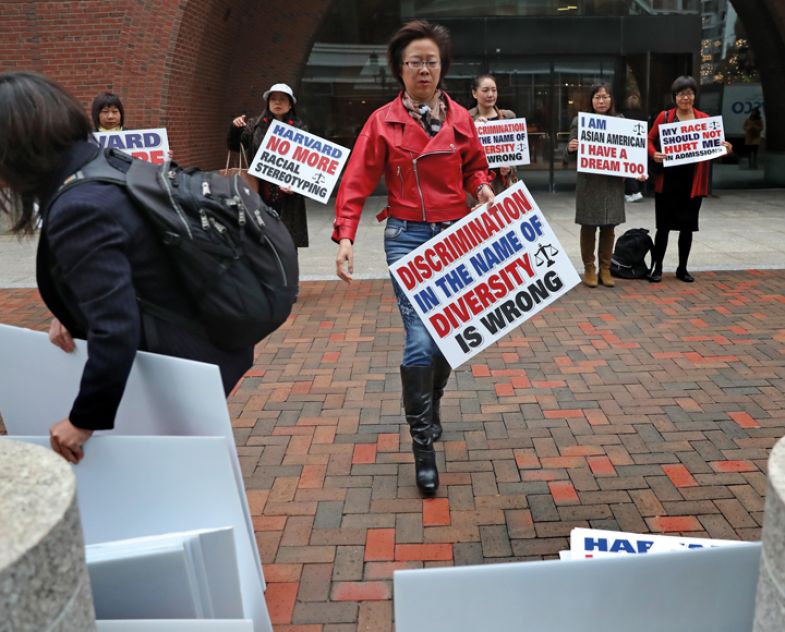
“There really is no higher priority than to make sure our students, our number-one customers, achieve their dream of a college education,” Perdue said in announcing his decision to jump aboard.
The Wisconsin Institute for Law and Liberty’s Lennington, as adamant a critic of DEI as they come, also sees no problem with assistance programmes that are constructed as strictly race-neutral. “That’s exactly what we advocate for – providing help to people who need help,” he says of Georgia State’s approach.
That bipartisan consensus means that the idea of more aggressively helping all students could be an important pathway forward in the bitter battling over the future of DEI in US higher education.
Others, however, do not see an all-student approach as the total solution to racial inequity in US higher education. One reason is that campus programmes designed for specific minority groups are meant to go beyond just getting students through their courses. The idea, defenders say, is to help them cope on a daily basis with the racism and stress of living inside organisations that don’t reflect or even accept their families’ cultures.
“All of the support outside the classroom doesn’t help,” Gavin says, “if they can’t take a class that they feel connected to.”
DEI’s opponents pretty clearly understand that, according to Delta College in Michigan’s Gavin. He sees the political assault on DEI as a comprehensive bid to upend what US colleges and universities teach and celebrate – and to restore the centuries-old identity of college campuses as a reliable incubator of white male careers and worldviews.
Other advocates for ongoing race-conscious support include Paulette Granberry Russell, a former senior adviser on diversity at Michigan State University who now serves as president and chief executive officer of the National Association of Diversity Officers in Higher Education. She sees fundamental limits to any comprehensive approach to US student success that only obliquely concerns itself with race, given that race is the central point upon which US inequity was created and still revolves.
Granberry Russell acknowledges that anyone, even white males, can suffer undue exclusion in higher education. But the overriding problems are clearly elsewhere. “I would say point those out to me,” she says of purported instances of chronic biases against white males. “I can point to more programmes that have underrepresentation of individuals based on race and gender and abilities and other ways in which people identify.”
She also stresses the importance of the faculty component of DEI initiatives. While US student diversity has been improving markedly, only about 11 per cent of the nation’s full-time college instructors are black or Latino. A Cornell University-led study in 2022 calculated that while racial minorities are rising among US faculty, it will still take decades, at the current pace, for them to match their share of the wider population.
DEI opponents pose an especially difficult challenge for US higher education because conservatives in the Trump era realise that the American public, as a general rule, tends to be persuaded by loud, repetitive voices, rarely demands evidence and often fails to pay close attention – all anathema to academic norms. Nor, it seems, are voters troubled by the kind of hypocrisy that allows DEI’s critics to piously assert principled stances – such as upholding states’ rights and defending free speech – only to embrace the opposite position when it suits them.
Leading Republican members of Congress, for instance, are now aggressively demanding better protections for Jewish students facing campus protests over Israel’s military bombardment of Gaza, perhaps not even recognising that protection is a primary DEI mission. “You’re shuttering these offices,” Boston University’s Jack says of DEI programmes on US campuses, “but that’s also going to shutter people who are Jewish, Muslim or Sikh.”
Among DEI critics’ more audacious moves is their demand that institutions revolutionise their understanding of diversity and see it in terms not of race but of political position. An example is Indiana, which has passed legislation that legally mandates “intellectual diversity” for state universities, defined as “multiple, divergent and varied scholarly perspectives on an extensive range of public policy issues”. Oversight is entrusted to university boards, many of whose members are appointed by the state governor – an office that has been held by Republicans since Mitch Daniels (who went on to become president of Purdue University) took office in 2005.
Critics, then, see the push for viewpoint diversity as, in reality, a push for the hiring of more conservative faculty in a sector deemed to have significant long-term influence over the political character of the nation and whose practitioners, as things stand, are overwhelmingly liberal.
Meanwhile, the Project 2025 manifesto, created by national conservatives as a road map for a second Trump term as US president, explains that the diversity in higher education it calls for should be understood in terms of institutional ethos and amounts to handing more government support to religious and for-profit institutions, both of which are struggling in the competitive marketplace.
DEI efforts geared toward racial equity, by comparison, are the work of “woke diversicrats” that should be rejected, the right-wing template declares. And it is a message that undeniably resonates with sections of the American public. For instance, several leading companies – including beer maker Budweiser, chain store Target and the farming products giant Tractor Supply Company – have moved to implement DEI-style practices only to struggle to negotiate customer pushback.
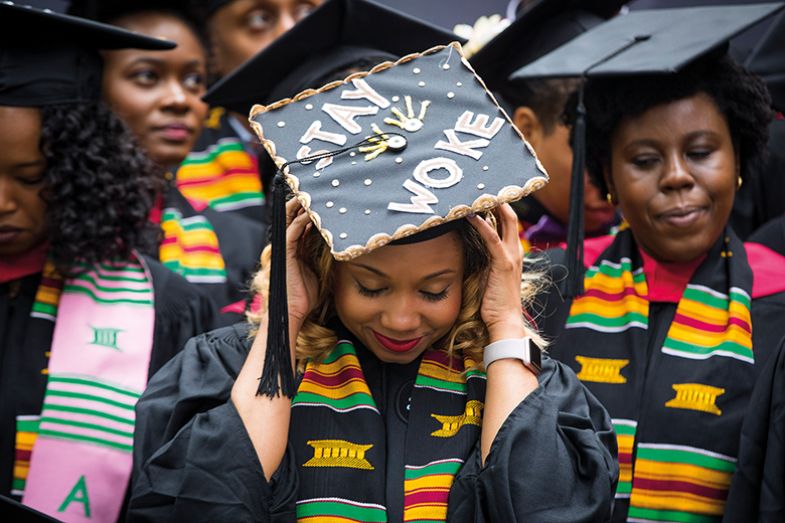
In higher education, leaders of public universities tend to offer tepid resistance to such attacks given the necessity of charming the lawmakers and donors who hold the purse strings. For the same reason, university presidents have tended to embrace the conservative-driven idea of higher education as more properly a venue for job preparation than for personal and societal improvement and to accept the growing calls to avoid speaking out on political issues.
Even some top private institutions – generally more insulated from political pressure – have looked nervous. The Massachusetts Institute of Technology and the Faculty of Arts and Sciences at Harvard University both said recently that they would stop asking faculty applicants to describe their philosophies for respecting campus diversity.
For the enemies of DEI, there’s also the tactic of outright denial. Examples include standardised admissions tests, which critics insist hinder minority access to higher education by posing questions with answers tied to the vocabulary and cultural norms of wealthy white students. Lennington argues both that such problems have now been fixed and that they caused no lasting damage. “I’m not persuaded at all that there are people today who have been harmed” by those tests, he says.
Jack begs to differ. He keeps a 20th-century hand-drawn map on his office wall, produced by the city of Miami, showing the “Coconut Grove Negro district”, a district designated for black residents. While politicians accuse him and other DEI defenders of being inappropriately focused on the past, Jack wants his students to see the reality that dictated where his mother lived and that, despite his own professional success, still affects him in various ways. “That is an historical artefact that still has present-day implications,” he says.
Basic US financial data illustrates the point. The median family wealth (the difference between their assets and liabilities) in 2022 was $285,000 (£225,000) for white households and slightly less than $45,000 across the black community. But even on campuses themselves, hammering home that message is proving difficult even without the legal roadblocks.
Colby College’s Sung, who was raised by Chinese American parents, describes the challenge of getting her classmates to take seriously their first-year DEI-related training: “If there’s no prior motivation to engage with that kind of material, it’s really easy to skate by,” she says. Illinois’ Young-Eleazar also sees the pushback on his campus as indirect but significant. He says his institution’s College of Education is quietly reducing its attention to social justice and equity concerns and instead putting more attention on studying technology’s role in teaching. “It’s more of a redirection, a diversion, away from it,” he says.
The cumulative situation across US higher education has got so bad, Delta College’s Gavin says, that his best hope may be something of a Hail Mary: that a US president will order a comprehensive look at equity in US higher education on the scale of the Kerner Commission – the 1967 investigation into the spate of riots that year requested by Lyndon Johnson – and let its findings inform a deep government-wide response.
But there’s also the possibility of things first getting much angrier. Poon, for instance, recalls that her hiring at UC Davis followed racial violence on campus sparked by the state’s ban on racial preferences in college admissions. There has been no sign yet of anything similar happening in response, for instance, to the ban on affirmative action or the shuttering of DEI offices. But the future is hard to predict around a wedge issue in a deeply polarised nation whose future political direction remains on a knife edge.
As Gavin puts it: “There’s a way to look at this particular moment as either catastrophic or full of opportunity.”
Register to continue
Why register?
- Registration is free and only takes a moment
- Once registered, you can read 3 articles a month
- Sign up for our newsletter
Subscribe
Or subscribe for unlimited access to:
- Unlimited access to news, views, insights & reviews
- Digital editions
- Digital access to THE’s university and college rankings analysis
Already registered or a current subscriber?

